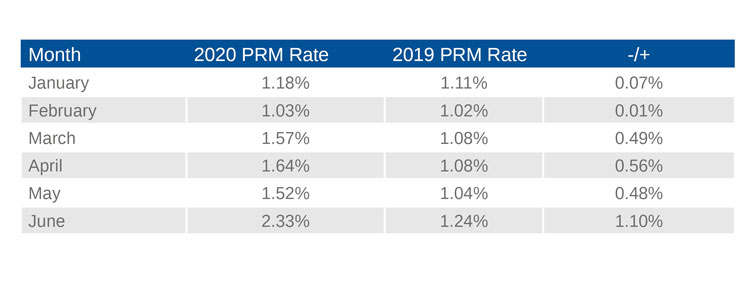PRM traffic rebounds faster than total PAX traffic
- Like
- Digg
- Del
- Tumblr
- VKontakte
- Buffer
- Love This
- Odnoklassniki
- Meneame
- Blogger
- Amazon
- Yahoo Mail
- Gmail
- AOL
- Newsvine
- HackerNews
- Evernote
- MySpace
- Mail.ru
- Viadeo
- Line
- Comments
- Yummly
- SMS
- Viber
- Telegram
- Subscribe
- Skype
- Facebook Messenger
- Kakao
- LiveJournal
- Yammer
- Edgar
- Fintel
- Mix
- Instapaper
- Copy Link
Posted: 4 January 2021 | Robert Castiglioni | No comments yet
Recently published data indicates that PRM traffic is returning to the skies at a faster rate than total passenger traffic, explains accessible air travel expert, Roberto Castiglioni.


Whilst pandemic-related travel restrictions and low consumer confidence continue to avert the recovery of the aviation sector, data from European airports suggests that the number of individuals with disabilities travelling by air is growing at a faster rate than the total number of passengers.
In early September, Ozion Airport Software published a comparative penetration rate analysis for Q1 and Q2 2020. Data for this report was gathered from nine European airports.


Credit: Ozion Airport Software
Irrefutably, total traffic numbers are beyond dire and completely off target of initial rebound forecasts. However, during lockdown, there was a widespread consensus that passengers with reduced mobility (PRMs) would be among the last to return to the skies. This report completely debunks this assumption. If anything, this data shows that airports and airlines must continue to improve their IT solutions, infrastructure, processes and procedures to cater to this segment.
The report also highlights the key role that IT solutions play in managing passenger traffic, and much more. For far too long, PRM traffic was regarded as a segment that must be catered for; a cost centre rather than an opportunity. Historically, far too little was invested into IT tools that would allow operators to fully comprehend and manage the dynamics of this segment in a dignified and cost effective manner.
Crucially, PRM assistance is fully intertwined with other airport processes that affect passenger flow and on-time departures, all the way down to the management of disaster recovery scenarios.




Credit: Ozion Airport Software
In these difficult times, it is imperative that resources are utilised as efficiently as possible. Data is key to achieving just that, but data alone is just part of the PRM jigsaw.
People with disabilities seek the same level of access in comparison to all other passengers, whenever and wherever possible. To deliver on this demand, operators must invest in accessibility. Built environments; accessible touchpoints (check-in kiosks, self-service baggage drop off counters, e-gates, self-service boarding gates); airport and airline apps; and websites must be accessible to allow people with disabilities to remain fully independent throughout the journey.
There has never been a better time than today to push full throttle on these changes and deliver a dignified customer experience whilst achieving significant savings.
On the other hand, not abandoning the outdated assistance model immediately will soon bring costs to unmanageable levels, something that no-one wants to see in these times when every penny matters.


Issue
Related topics
Accessibility, COVID-19, Passenger experience and seamless travel, Passenger volumes, Passengers with reduced mobility (PRMs)
Related organisations
ESAAG, European Civil Aviation Conference (ECAC), HAAG, UK Civil Aviation Authority


















